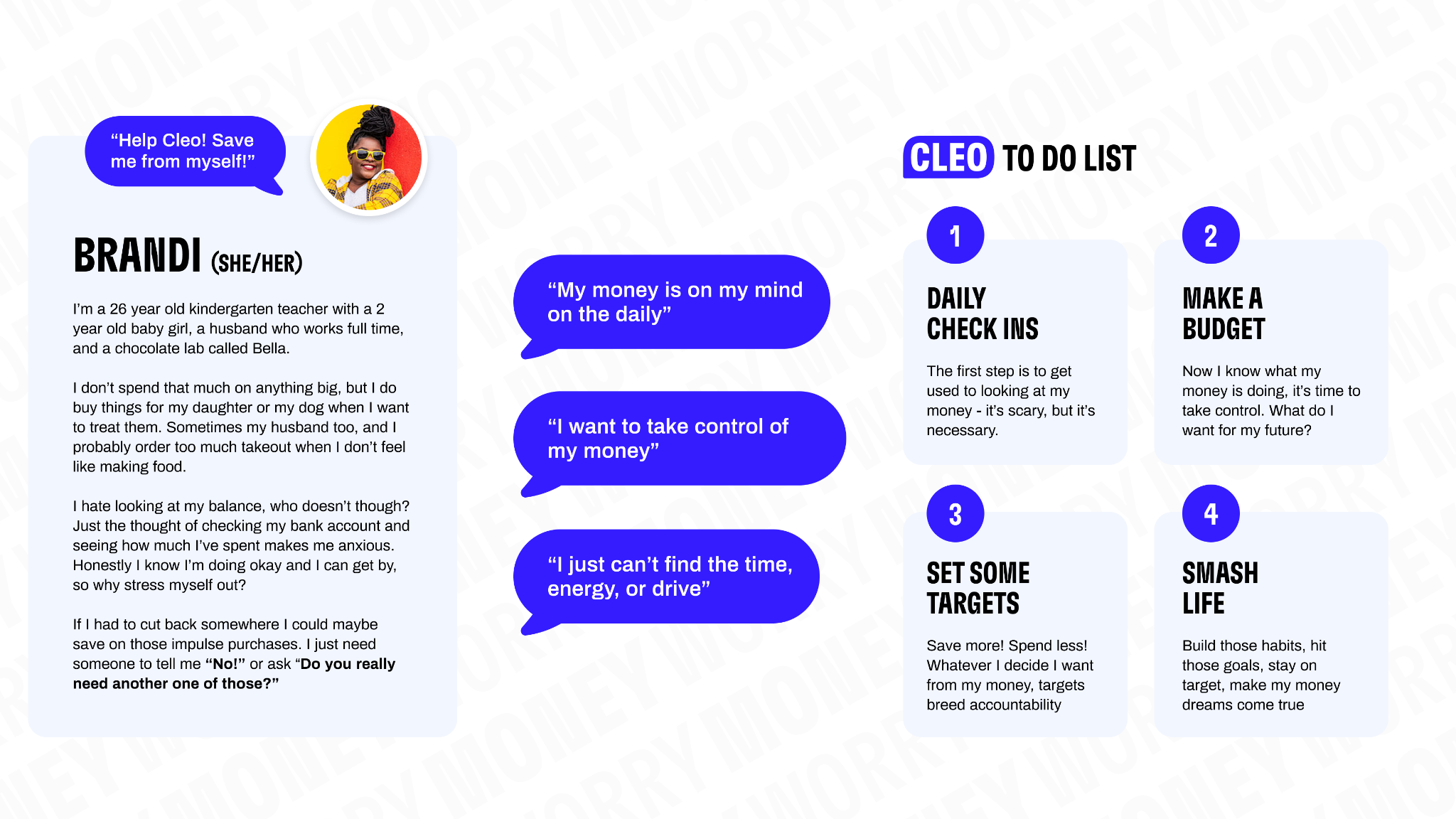.jpg)
Talent Corner: Interview Dos and Absolutely Don'ts
Tips and tricks to help you stand out (in a good way) and succeed in your job interview
This is some text inside of a div block with Cleo CTA
CTASigning up takes 2 minutes. Scan this QR code to send the app to your phone.

Let me start by saying that I’m not the biggest advocate for personas, they’re not always the best way to understand our users and their challenges. But, this particular case is one where a persona has been so helpful, I even felt compelled to write a blog about it.
.png)
Let me start by saying that I’m not the biggest advocate for personas, they’re not always the best way to understand our users and their challenges. But, this particular case is one where a persona has been so helpful, I even felt compelled to write a blog about it.
At Cleo, we know our users. We have data up to our ears about their behaviours, risks, plenty - but only around products we offer them now.
This quarter, we’re looking at an interesting behaviour in our users that differs from the expected one of coming to Cleo because they need more money. Instead, we’re looking at people who want to spend less of the money that they do have. This behaviour isn’t defined by age, income, financial institution, education, or any of the usual metrics we usually track. So, we needed to approach the problem in a different way, and that’s where the persona comes in.
Here’s a recap on personas, courtesy of Aurora Harley’s brilliant blog post:
“Personas are yet another tool that can be used to encourage decisions based on a real person’s needs, and not on those of a generic and undefined ‘user’.”
Simply put, they help put a name, face, and story behind your data; which makes the user more memorable. It’s also much less of a mouthful to say you’re designing for John, George, Paul, and Ringo than four male musicians from Liverpool, all aged between 18 and 35.
So, what’s the process? Predictably, we started with research. We had reams of survey responses about what our users struggle with when it comes to their relationships with money, and we complimented that with a whopping ten deep-dive calls with some novice money-managers across the States. Our assumption was that spending was a habit, an unconscious pattern of cues, routines, and rewards that people aren’t always aware of. Just think of all the times you’ve made a shopping list for your weekly shop, only to arrive home with a thousand things you don’t need - I’m looking at you power drill, still in your box.
Fast forward through the calls and some lengthy analysis - thank you affinity mapping - and we uncovered the following commonalities in the people we spoke to:
The challenge was that this wasn’t just a problem for one demographic or segment but many, so we needed to create a lens through which to view people. Enter the persona. Meet Brandi.

She knows she needs to get better with her money, and she knows her impulse purchases are holding her back. Her money is on her mind every day but she just doesn’t have the time or motivation to think about making a change. The result is that when we start designing new features, interactions, messaging, or selecting new gifs to add to our pretty impressive library, we know who we’re talking to. So why do this now and not three, six, twelve months ago? Well, we know more now than we did then. We have more data, from more users, in more situations than before and with that expansion comes complexity and a greater need for nuance. It’s the right time for a persona, for clarity, and for a simple definition of a user group that everyone can rally around to make sure we’re making the right choices for Brandi.
That’s not to say that we’re only designing for Brandi, this persona is one of many we’ll create, to understand the nuances of our users and design stuff that meets their needs. Soon I’ll share with you all the Archetype work we’ve been doing in the research team which defines or ‘buckets up’ the broader goals, frustrations, wants, and needs of our increasingly diverse user base.
If this sounds like something you want to get involved in, check out the Cleo careers site - we’re hiring!
.jpg)
Tips and tricks to help you stand out (in a good way) and succeed in your job interview

I joined Cleo in March as a Backend Ruby Engineer, three weeks after I joined the UK went into lockdown and I was working in a fully remote team. These four approaches to working have helped me stay an active contributor to the team over the last three months of isolation.
.png)
Here’s the latest on diversity, equity and inclusion at Cleo. Our progress, learnings and focus areas for this year and beyond.

